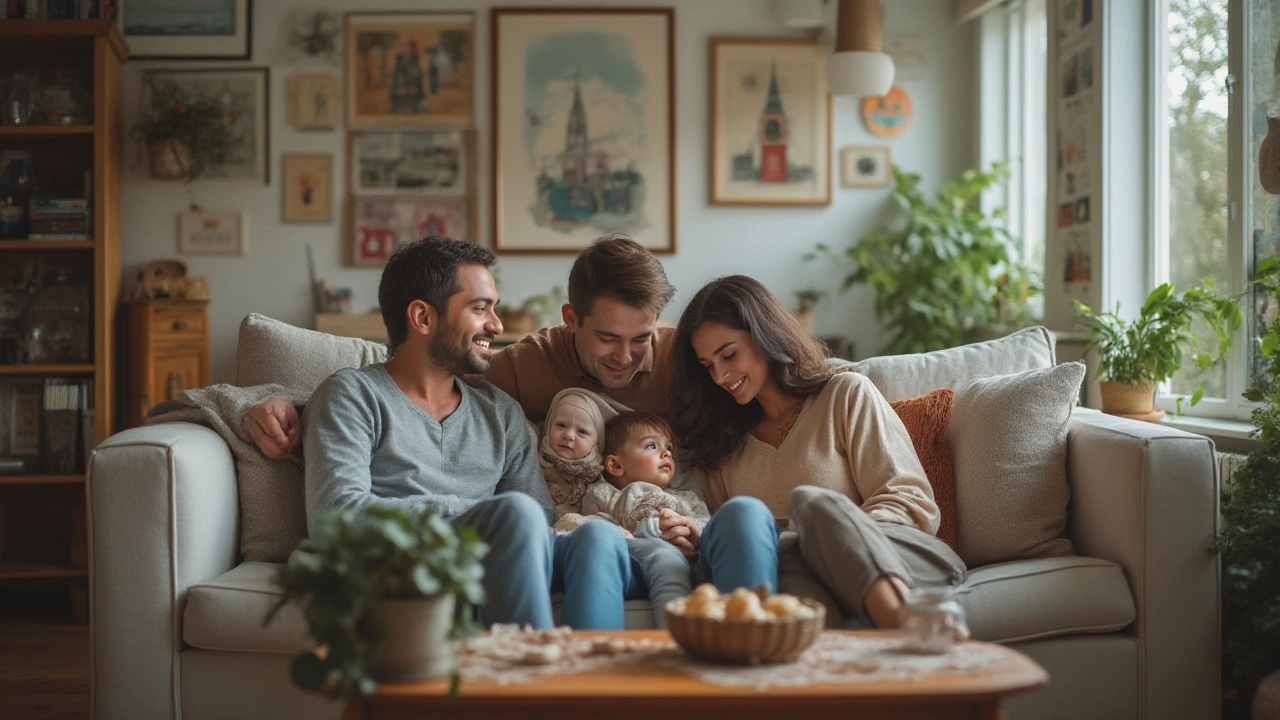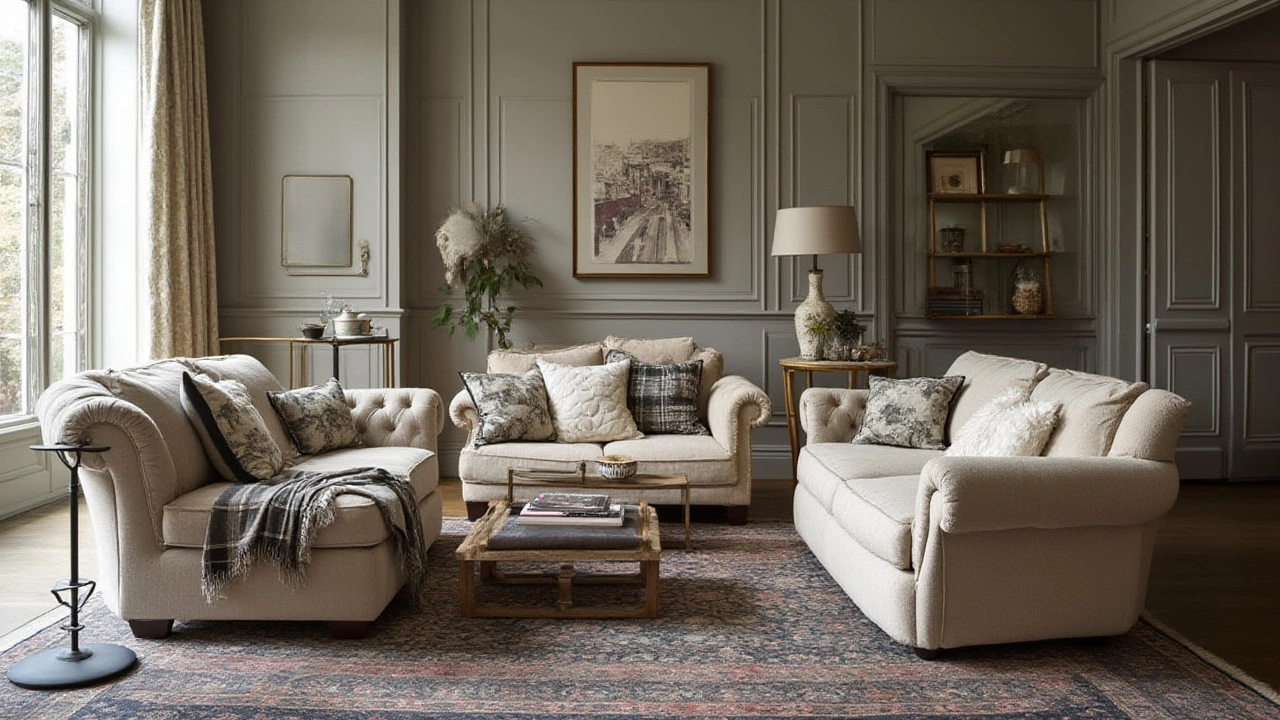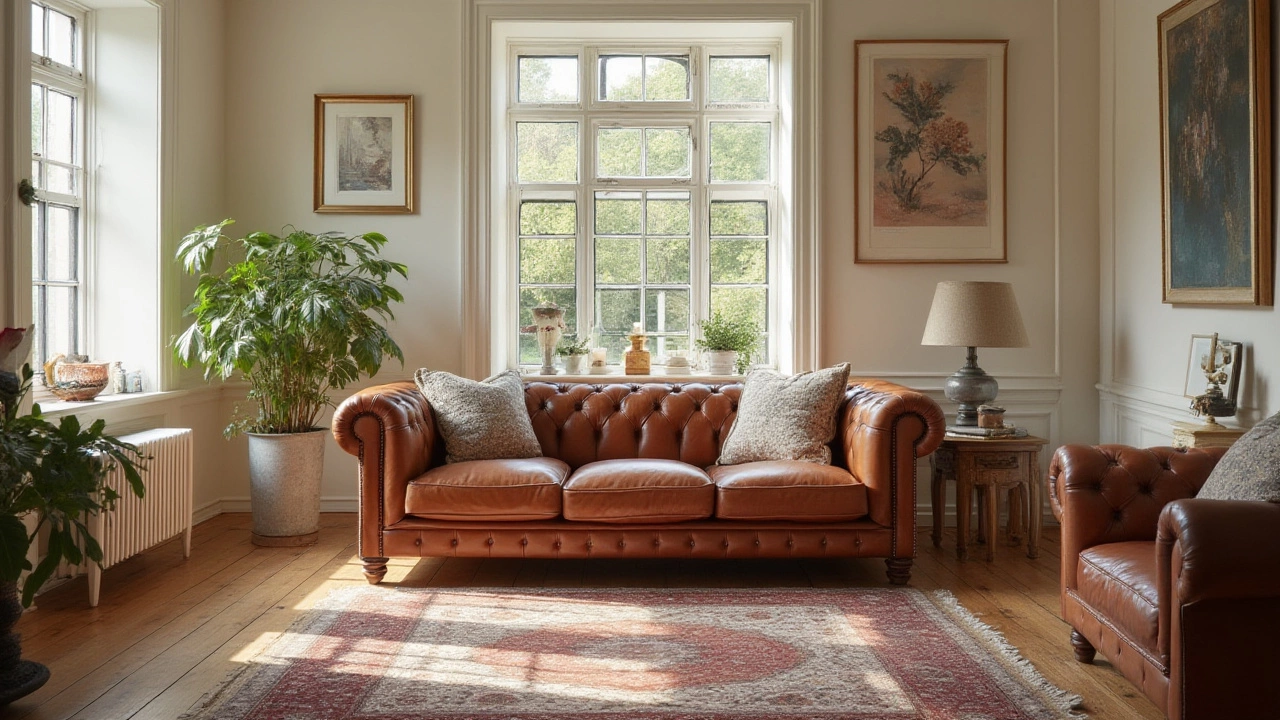Ever walk into a room and just instantly feel at home? Sometimes, it’s the sofa. Not the wild, instantly-dated one with patterns you’d see at your grandma’s house in the seventies—the sofa that could fit into any gorgeous hotel lobby, minimalist apartment, or traditional family room. A sofa that feels like it has always belonged. But what is it about some sofas that, no matter how trends shift, still just look right? This isn’t just a question of taste or nostalgia—there’s some real design science and a history lesson mixed in.
The DNA of a Timeless Sofa Style
Some things get better with age—or in this case, never get old at all. What sets a timeless sofa apart from the “here today, gone tomorrow” pieces you see marked down during clearance season? More than just being bland, a truly timeless design has a balance: it feels familiar, but not tired; elegant, but not old-fashioned. It’s not about avoiding trends entirely, but rather staying above the noise. Curves, legs, buttons, arms, fabrics—these little details stack up. A classic chesterfield, for instance, with its deep tufts and rolled arms, has roots stretching back to the 18th century, but it feels just as at home in a London club as it does in your modern loft. The mid-century modern style, all sleek lines and teasingly angled legs, recalls the optimistic 1950s, but somehow it also pairs perfectly with the chaos of today’s Netflix-and-chill world.
Manufacturers have tracked these shifts. According to a 2022 survey by the International Furniture Federation, over 42% of shoppers said their main goal was to buy furniture that would last “over a decade without looking outdated.” This is more than wishful thinking—sofa styles like the English roll arm or the tuxedo sofa haven’t just survived for decades; they’ve thrived, popping up in everything from glossy magazine spreads to sitcom living rooms (think Monica’s apartment on Friends). What these pieces share is an honest simplicity and quality craftsmanship. And when you’re spending thousands on a sofa, that matters.
There’s also something psychological going on here. People are drawn to pieces they remember growing up with, but don’t want to feel stuck in the past. Designers rely on that comfort. Sofas with symmetrical proportions, natural materials, and subtle but sturdy profiles—the kind you could rebuild your room around again and again—slip through the fashion net. It’s furniture with staying power, and history keeps proving it right.
Iconic Timeless Sofa Styles Explained
Let’s get concrete—what are these legendary sofas? If you were to hunt for a single model that everyone agrees “never goes out of style,” you’d probably end up with a shortlist rather than just one. Some unmistakable heavy-hitters have been riding the perennial popularity wave:
- Chesterfield: Deep-buttoned, with rolled arms equal to the back, usually upholstered in leather. Instantly reads as posh, but casual enough to soften with linen or velvet.
- English Roll Arm: Sack back, slightly rolled arms lower than the back, loose seat cushions. It’s effortlessly welcoming, and pretty much works with any decor.
- Mid-Century Modern: Low-slung frames, narrow wooden legs that often splay, clean upholstery. Even if your room is swamped with tech, it roots the look in classic cool.
- Tuxedo: Back and arms of the same height, sleek lines, boxy silhouette. Urban vibe, but stunning with any material, from crisp linen to lush velvet.
- Lawson: Designed for comfort: loose, overstuffed cushions, straight lines, and simple arms. Often the “anonymous” sofa you see in magazines because it never yells for attention.
All these styles have crossed continents and generations. Take the Chesterfield for example. First crafted for Lord Philip Stanhope, the fourth Earl of Chesterfield, people now see it everywhere from Parisian flats to trendy hotels in Tokyo—a testament to its universal appeal. The Mid-Century Modern sofa, born from designers like Florence Knoll or Charles and Ray Eames, hit mainstream furniture markets in the 1950s and somehow shows up in every chic apartment on Instagram today. Even the English Roll Arm, once a go-to for stuffy country estates, feels right at home in a bright Brooklyn apartment or a California bungalow.
What’s interesting is how these shapes stay fresh no matter the upholstery. A trendy print or a zany color might age poorly, but the frame sticks around. Swap out fabrics and throw pillows to match the season or your mood. The frame itself? Timeless.

Tips for Identifying a Timeless Sofa
Not every sofa at the store screaming “timeless classic!” is actually going to age gracefully. But there are red flags and green lights you can spot even without a design degree. Here’s what to look for if you want to bring home a piece that won’t look like last year’s mistake next July:
- Proportion matters: Overly exaggerated elements or tiny details that look flimsy will almost always look dated sooner.
- Simple silhouettes win: The less busy the shape, the easier it is for the sofa to blend in—even when tastes change.
- Quality construction: A kiln-dried hardwood frame and hand-tied springs sound boring but this is what lasts. Cheap frames warp after a few years, and no style survives sagging seats.
- Neutral base fabrics: Pick the wild print if you want, but if you want timeless, a solid or heathered neutral makes switching up your look as easy as swapping pillows or a throw.
- Reference table: The table below shows top-selling sofa styles over the past 20 years—a nice cheat sheet if you want something with proven staying power.
| Style | Year First Introduced | Consistent Sales Rank (2005-2024) | Key Features |
|---|---|---|---|
| Chesterfield | Late 1700s | Top 5 | Tufted back, rolled arms |
| English Roll Arm | Early 1800s | Top 10 | Low arms, loose cushions |
| Mid-Century Modern | 1940s-1950s | Top 3 | Clean lines, wood legs |
| Tuxedo | 1920s | Top 15 | Boxed profile, equal arms and back |
| Lawson | Early 1900s | Top 20 | Straight arms, plush cushions |
If you keep getting stuck between two choices, ask yourself: "Would this look awkward if I saw it in an old photo or a new one?" If the answer is no, you’re on the right track.
Why Some Sofas Never Go Out of Fashion
This isn’t magic or just great marketing. Certain designs stick around because they touch something people want: comfort, reliability, and a bit of aspirational flair. A plain metal futon won’t make you think of Sunday naps or movie marathons. The softer English roll arm, though, practically begs you to curl up with a book. Designers understand this and tend to return to forms that invite people to relax, chat, or just sprawl out for a nap.
Personal stories tie people to certain sofa styles, too. The classic chesterfield might generate nostalgia for those who’ve seen it in their family’s home for decades. The tuxedo sofa, with its boxy modern lines, reminds some of old city apartments and their chic cocktail parties. Entire decor trends come and go—industrial, farmhouse, all-white minimalism—but these sofas just wait them out. They get new upholstery or a modern lamp next to them, and suddenly they’re on-trend again.
There’s also a practical reason for their longevity: these sofa styles aren’t so big or weird that you’ll one day hate their footprint in a different place. They work in big city apartments, suburban homes, or even a cottage in the woods, without stealing all the attention or making the room feel crowded. In other words: they’re “transferable” designs. Choices in durable upholstery—think high-quality cotton, leather, wool blends—also play into their resilience. Beware of the cheap stuff. Fabric that falls apart after a year will make even the most beautiful frame seem tired and old. A tight, well-stretched fabric or a slightly distressed leather keeps the classic feel but wears in, not out.

How to Pair a Timeless Sofa With Modern Style
You've picked the perfect classic sofa, but what about the rest of your space? The trick is to balance old and new. You don’t want a room that screams antique shop unless that’s your thing. Try mixing modern elements—like geometric rugs, colorful art, or industrial lighting—with the timeless centerpiece. The result feels fresh, contemporary, and deeply personal.
Don’t feel you have to lock yourself into a time capsule either. Even a chesterfield can look futuristic with a bright, unexpected color—think sapphire blue or emerald green. Layer with metallic or glass side tables, or toss on a few oversized throw pillows in today’s trending colors. The sofa grounds the room, while the accents keep things interesting.
If you worry about making your space too bland, experiment with texture. Pair a velvet English roll arm with a chunky knit throw, or a mid-century modern sofa in rich leather with a faux fur rug. Wall art, plants, unique lighting—these are the things that refresh your room without you having to replace your big anchor piece every few years. And when you get tired of this, swap out the smaller stuff and your timeless sofa is ready for the next act.
In the end, your home is your stage. A timeless sofa isn’t invisible—it just knows how to look good whenever and wherever, catching the right kind of attention for all the right reasons.


Write a comment